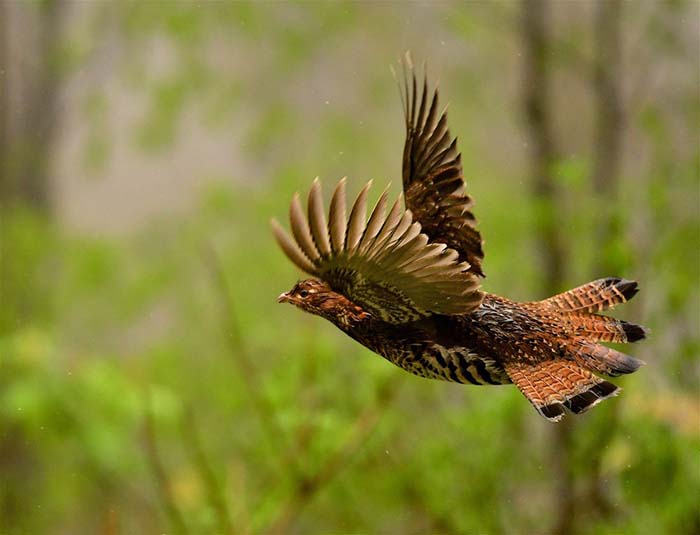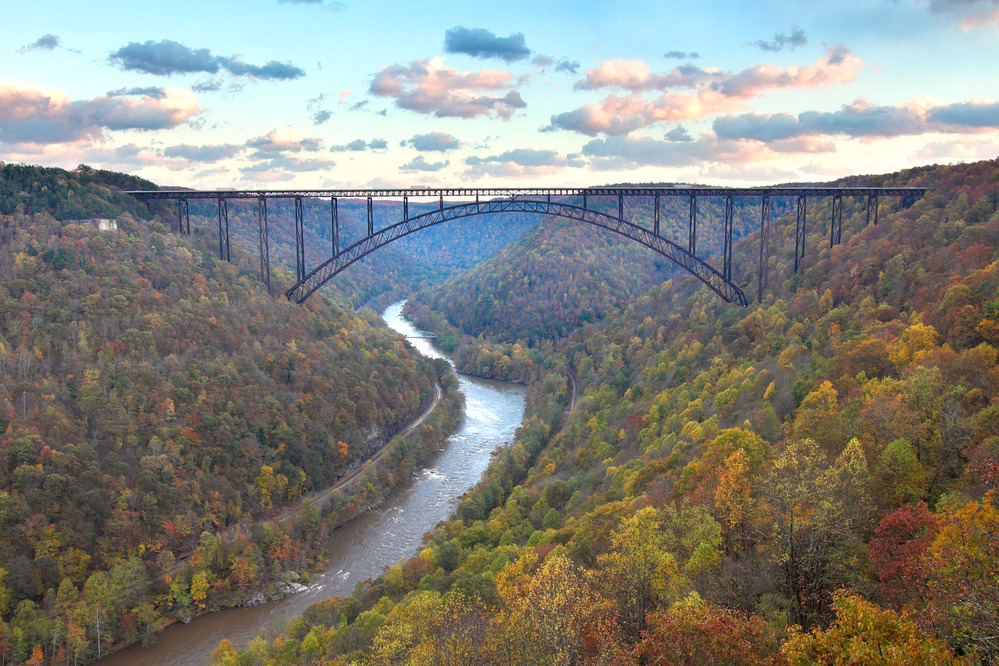WASHINGTON – This year has been extremely difficult, and, yes, Congress has upset us greatly at points – especially the last few days. And while it may seem a moot point to review this Congress, truthfully, they were able to come together in three instances and pass historic legislation aimed at helping our national outdoor assets.
While most of the bills to be laid out in this piece were supported by virtually every sportsman or woman, one was quite contentious, but more on that later. First, we begin with the highly-favored bills passed by the 116th Congress and signed into law by President Donald Trump.
The Great American Outdoors Act

It would be a mistake not to start this list with the Great American Outdoors Act, a piece of legislation with so much bipartisan effort behind it that it rivals the first national park designations by President Theodore Roosevelt.
Albeit the current administration has essentially done a 180-degree turn from actually implementing the monies laid out in the bill as is, the GAOA was a landmark for conservation efforts in our country. It fully funded the Land and Water Conservation Fund on an annual basis at $900 million, a mark reached only twice in its lifetime since the LWCF was created in 1965 by Congress. It was the second piece of a bill package created by our current Congress, the first part being the John D. Dingell Conservation and Management and Recreation Act which permanently authorized the LWCF in 2019. The GAOA was introduced on March 9 with the language that it would fully fund the LWCF as well as provide $9.5 billion over the next five years to begin addressing the deferred maintenance backlog on federal land.
Sen. Joe Manchin (D-W.Va.) was the one who created the bill, though political theatre handed it off to Senators Steve Daines (R-Mont.) and Cory Gardner (R-Colo.) in what looked like a re-election bid. Regardless, Manchin was willing to let his Republican colleagues sponsor the bill, knowing it would be passed with Trump at the helm.
“Part of the Great American Outdoors Act is the National Parks and Public Lands Legacy Restoration Fund which seeks to address the crumbling infrastructure on our nation’s public lands,” Schmitz said. “And most of the money goes to the National Park Service, 70% of the $9.5 billion, but 15% goes to the Forest Service, 5% goes to each the Fish and Wildlife Service, BLM and the Bureau of Indian Education. And that specifically seeks to increase access for sportsmen and women, whether it’s roads, bridges, trailheads, access points, restrooms, visitor facilities, that’s extremely important for these lands and waters.”
The GAOA also addressed a key problem for sportsmen and women, landlocked public land.
“The other element to the access part is a provision that’s the Making Public Lands Public Initiative,” Schmitz said. “This is a long-standing CSF program that’s been around since 2004-2005 and we just got it signed into law as part of S. 47, the Dingell Act, but the Great American Outdoors Act fully funds that program. What the Making Public Lands Public Initiative seeks to do is increase access for sportsmen and women and other outdoor recreationists to some of those landlocked pieces of land that total, just in federal land, is 10 million acres across the nation. So it’s pretty significant.”
America’s Conservation Enhancement Act creates CWD task force, reauthorizes NAWCA and Chesapeake Bay Program

It seemingly slipped through Congress, finalized by a voice vote in the House of Representatives on Oct. 1, but the America’s Conservation Enhancement Act packed quite the punch.
Largely led by Senators John Barrasso (R-Wyo.), Tom Carper (D-Del.), Martin Heinrich (D-NM) and John Boozman (R-Ark.) and a hefty group of representatives, the ACE Act was the cherry on top of the impressive conservation legislation passed by the 116th Congress.
There were a lot of great parts of the ACE Act, but the biggest likely will be the establishment of a CWD task force within the U.S. Fish and Wildlife Service. The task force is designed to develop an action plan for state and federal agencies to increase research of the virus and ways to combat it. According to the National Wildlife Federation, the legislation also commissions a study by the National Academy of Sciences that will look into the “pathways and mechanisms of the transmission of chronic wasting disease.”
Chronic Wasting Disease is not widespread in West Virginia at the moment, mostly contained in the Eastern Panhandle, but it is spreading at an alarming rate throughout the country. It’s in Maryland and Virginia and could spread further west given time. It’s also prevalent in western states like Wyoming, Kansas, Montana, Nebraska, Colorado and Utah. Every county in Wyoming has some level of prevalence.
“CWD is increasingly becoming a problem,” Schmitz said. “It’s critically important to understanding CWD because, frankly, it’s like the ocean – we don’t know that much about it. We have some ideas and some ways that we believe CWD is transmitted but we’re not exactly sure. The second one we’re excited about is the establishment of a Chronic Wasting Disease task force between the Department of the Interior and the Department of Agriculture. Those two agencies are the primary federal managers for Chronic Wasting Disease. They’ve been working for many years as [individuals] but this task force requires them to work together to address CWD.”
The ACE Act also reauthorized the North American Wetlands Conservation Act and the National Fish and Wildlife Foundation Establishment Act. The reauthorization of NAWCA will provide $60 million over the next five years. Further, the National Fish and Habitat Partnership was authorized for five years, providing $7.2 billion to continue protecting and enhancing fish habitat.
Also included was the reauthorization of the Chesapeake Bay Program, as well as the Chesapeake Bay Gateways and Watertrails network and Chesapeake Bay Gateways Grants Assistance Program to 2025. The Chesapeake Bay Program was formed in 1983 and has been integral in protecting the Chesapeake Bay, its tributaries and adjoining land since, and with the passage of the ACE Act will now receive an initial $90 million and increase to $92 million over the five-year period. The program is incredibly beneficial to states in the Chesapeake Bay watershed, including West Virginia’s eastern panhandle.
“The Chesapeake Bay Program – the water quality for the Chesapeake Bay starts in places like West Virginia or Pennsylvania or New York,” Schmitz said. “Obviously Maryland and Virginia have a role in that as well, but what the Chesapeake Bay Program seeks to do is help those states that aren’t necessarily directly engaged with the Chesapeake Bay have a better role in terms of water quality.”
Schmitz noted projects the CBP would fund concern water quality in trout streams in West Virginia. This is critical for native brook trout populations which have been declining over time.
Still pushing for the Recovering America’s Wildlife Act

The Recovering America’s Wildlife Act did not pass Congress this year, but there’s still an effort from the CSF and others to get it through in the upcoming year.
RAWA did make it through the U.S. House of Representatives but died in the Senate. Reasons vary, but the bill had support from CSF and other organizations like Trout Unlimited due to it’s five-year, $7 billion plan to “catalyze proactive, on-the-ground, collaborate efforts to restore essential habitat and implement key conservation strategies, as described in each state’s Wildlife Action Plan,” according to the National Wildlife Federation. Further, according to a 2018 report “Reversing America’s Wildlife Crisis: Securing the Future of Our Fish and Wildlife,” one-third of wildlife in the United States is at risk of extinction. To help species already listed under the ESA, 10% of the resources would be used to recover them.
The bill would have required state fish and wildlife agencies to partially match funds awarded to them, and many state biologists agree that the extra help would have been beneficial.
“Recovering America’s Wildlife Act is a longstanding priority for the Congressional Sportsmen’s Foundation,” Schmitz said. “Our president, Jeff Crane, is a member of this blue-ribbon panel developed by Bass Pro Shops and Cabela’s CEO Johnny Morris and former Wyoming Gov. Dave Freudenthal to develop a 21st-century mechanism to address the species that are falling through the cracks. We look at a lot of those species like whitetail deer or turkey or certain fish species that have really thrived due to sportsmen’s contributions but there are a lot of non-game species that are falling through the cracks and game species as well. Grouse is a great example of that. Recovering America’s Wildlife Act seeks to provide funding for those animals and species that traditionally haven’t been conserved through sportsmen’s dollars.
“The biggest thing about Recovering America’s Wildlife Act is that it’s really a partnership program. It’s primarily driven by the state fish and wildlife agencies, but they’re required to develop these state wildlife action plans that are ultimately approved by the [U.S.] Fish and Wildlife Service. These plans serve as, essentially, a blueprint for each state’s unique conservation needs. Congress mandated those plans back in 2003, I believe, and Recovering America’s Wildlife Act seeks to fully fund those plans. The $1.3 billion [a year] seems like a random number but that number came from a survey that we sent out to all 50 state fish and wildlife agencies and said, ‘Hey, what do you guys need to address these species of greatest conservation need?’ And they came up with that $1.3 billion, collectively. That’s 75% of the funds that they estimate they need, and they’re required to contribute a 25% match.”
As for it’s less than popular appeal, Schmitz cites its lack of history compared to the LWCF or NAWCA.
The New River Gorge National River redesignated as a National Park and Preserve

The New River Gorge National River has been redesignated as a National Park and Preserve, making it the 63rd national park in the U.S. National Park System.
This was quite a contentious move. While a national park designation will benefit tourism in the Fayetteville area, something that is not a bad thing, hunting will not be allowed on more than 4,000 acres previously open to it. Hunting will, however, be allowed on lands designated as a preserve, as well as on 301 acres in the Lower Gorge area at the request of local hunters as well as 368 acres in Grandview that have never been open to hunting. Further, the legislation allows the NPS to bid on additional preserve land totaling 3,711 acres to help offset the land lost.
The legislation passed as part of the year-end package, which included COVID-19 relief monies and other provisions.
There is contention surrounding the bill and what’s to come, however no one with a dissenting opinion was available to talk at the time of this story publishing. The Register-Herald’s Larry Case spoke out against the redesignation, which can be found here.
A longer, more detailed story will be published in the new year concerning this legislation.
Bipartisanship is still possible, and natural resource legislation proves that
The biggest takeaway from bills like this is that bipartisanship still exists. In an incredibly polarized time, legislation like the GAOA, ACE Act, and RAWA prove that our congressmen and women can work across the aisle with one another. That proves to us, the American people, that we, too, can work together.
“The biggest thing is that conservation and sportsmen’s issues and access is something that’s really becoming something that resonates with the American public,” Schmitz said. “It’s increasingly becoming an important thing for members of Congress and their re-election. I think that it’s something they want to take home to their constituents. I’m only 26 but based on my very limited historical knowledge of D.C. it sounds like there’s been a noticeable change in tone the last 5-10 years on these issues.
“The fact that it’s very important for all constituencies makes it more appealing for bipartisan collaboration. The other aspect of that is that everybody enjoys the outdoors. You look at the Great American Outdoors Act, everyone loves the great American outdoors. How can you not love our iconic national parks or national forests or wildlife refuges? I think it’s just the fact that public lands access and conservation is what America is.”
TWEET @andrewspellman_




